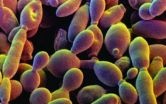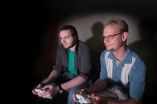(Press-News.org) SEATTLE, WASH. — September 15, 2011 — The Allen Institute for Brain Science announced today the discovery of a new class of cells in the spinal cord that act like neural stem cells, offering a fresh avenue in the search for therapies to treat spinal cord injury and disease. The published collaborative study, authored by scientists from the University of British Columbia, the Allen Institute for Brain Science and The Montreal Neurological Institute and Hospital at McGill University and titled "Adult Spinal Cord Radial Glia Display a Unique Progenitor Phenotype," appears in the open access journal PLoS One.
The research team utilized the Allen Spinal Cord Atlas, a finely detailed genome-wide map of gene expression throughout the mouse spinal cord, to compare the genes expressed, or turned on, in adult spinal cord radial glia with those found in other neural stem cells, revealing a signature set of 122 genes that indicate the likeness of these cells to classic neural stem cells.
The nervous system has historically been thought to be incapable of repairing itself, as the cells used to create it are exhausted during development. With the identification of these new stem cell-like radial glial cells, it may be possible to activate a certain set of genes in order to encourage those cells to reconstruct a damaged network in the adult spinal cord.
"By using the Allen Spinal Cord Atlas, we were able to discover a brand new cell type that has previously been overlooked and that could be an important player in all manner of spinal cord injury and disease, including multiple sclerosis and ALS," said Jane Roskams, Ph.D., neuroscientist at the University of British Columbia and senior author of the study.
From disabled veterans to those afflicted with Lou Gehrig's disease (ALS) or Spinal Muscular Atrophy, spinal cord related diseases and disorders affect people of all ages including nearly one-quarter of a million Americans who have suffered from a spinal cord injury; as many as 30,000 Americans who suffer from ALS at any given time; and approximately 2.5 million people worldwide who suffer from multiple sclerosis.
"This is a tremendous example of how our public atlas resources can lead to critical discoveries that offer promising avenues for developing much needed new clinical therapies," said Allan Jones, Ph.D., Chief Executive Officer of the Allen Institute.
Dr. Roskams, who led the collaborative research team, has said that it is possible this pool of cells was overlooked because of its unusual location, and because scientists have been working with limited information. With the availability of the public, online Allen Spinal Cord Atlas, the information accessible to researchers has been vastly increased.
In the search for neural stem cells, scientists have been using a few known genes as clues to find candidates deep in the middle of the spinal cord. While some neural stem cells have been discovered there, the newly identified class of spinal cord radial glia run along the edge of the spinal cord, an incredibly convenient location for activating them with minimal secondary damage to help the spinal cord repair during disease or after injury.
"When we first saw known neural stem cell genes appearing in these cells on the edge of the cord, I realized we not only had a brand new cell, but had the capacity to reveal a new gene set that may also guide us to hidden neural stem cells in atypical locations in the brain. I did not expect so many of them to link to human diseases," Dr. Roskams said.
Identifying these cells and the genes relevant to activate them opens fresh new pathways to explore effective therapies to treat spinal cord injury and several types of neurodegenerative disease.
INFORMATION:
The Allen Spinal Cord Atlas, part of the suite of Allen Brain Atlas resources, is freely available online at www.brain-map.org.
The Allen Spinal Cord Atlas was made possible by a unique funding consortium comprising public and private entities including The ALS Association, PVA Research Foundation, Wyeth Research, PEMCO Insurance, National Multiple Sclerosis Society, International Spinal Research Trust and philanthropist and Institute founder Paul G. Allen, as well as numerous anonymous donors.
Citation
Petit, A. et al. (2011) Adult Spinal Cord Radial Glia Display a Unique Progenitor Phenotype. PLoS ONE 6(9): e24538. doi:10.1371/journal.pone.0024538
About the Allen Institute for Brain Science
The Allen Institute for Brain Science (www.alleninstitute.org) is an independent, 501(c)(3) nonprofit medical research organization dedicated to accelerating understanding of the human brain by fueling discovery for the broader scientific community. Through a product-focused approach, the Allen Institute generates innovative public resources used by researchers and organizations around the globe. Additionally, the Institute drives technological and analytical advances, thereby creating new knowledge and providing new ways to address questions about the brain in health and disease. Started with $100 million in seed money from philanthropist Paul G. Allen, the Institute is supported by a diversity of public and private funds. The Allen Institute's data and tools are publicly available online at www.brain-map.org.
END
A new paper by a team of University of Notre Dame researchers that included Shahriar Mobashery, Jeffrey Peng, Brian Baker and their researchers Oleg Borbulevych, Malika Kumararasiri, Brian Wilson, Leticia Llarrull, Mijoon Lee, Dusan Hesek and Qicun Shi describes a unique process that is central to induction of antibiotic resistance in the problematic bacterium methicillin-resistant Staphylococcus aureus (MRRA).
MRSA first emerged in the United Kingdom in 1961and spread rapidly across the globe. Modern strains of MRSA are broadly resistant to antibiotics of various classes, ...
Scientists have replaced all of the DNA in the arm of a yeast chromosome with computer-designed, synthetically produced DNA that is structurally distinct from its original DNA to produce a healthy yeast cell. (Yeast chromosomes are often depicted as bow tie-shaped--with each chromosome bearing two "arms" that are positioned similarly to the two sides of a bow tie.)
These results confirm that large pieces of DNA can be synthesized and inserted into a chromosome, and validate the research team's principles for designing synthetic chromosomes. Further, the researchers report ...
Lyme disease is a dangerous disease which is transmitted by ticks. Blood-sucking ticks ingest the agents that cause the disease – bacteria of the species Borrelia burgdorferi and its relatives – during a blood meal, and subsequently transmit them to the next victim they feast on, often a person. It is estimated that, in Western Europe, up to half of all ticks carry the bacteria. Although the early symptoms of the illness are quite mild, if left untreated, it can result in serious damage to the skin, the joints, the heart and the nervous system, and effective therapy becomes ...
SANTA CRUZ, CA--Using the Hubble Space Telescope to probe the distant universe, astronomers have found supermassive black holes growing in surprisingly small galaxies. The findings suggest that central black holes formed at an early stage in galaxy evolution.
"It's kind of a chicken or egg problem: Which came first, the supermassive black hole or the massive galaxy? This study shows that even low-mass galaxies have supermassive black holes," said Jonathan Trump, a postdoctoral researcher at the University of California, Santa Cruz. Trump is first author of the study, ...
Secrets from the age of the dinosaurs are usually revealed by fossilized bones, but a University of Alberta research team has turned up a treasure trove of Cretaceous feathers trapped in tree resin. The resin turned to resilient amber, preserving some 80 million-year-old protofeathers, possibly from non-avian dinosaurs, as well as plumage that is very similar to modern birds, including those that can swim under water.
U of A paleontology graduate student Ryan McKellar discovered a wide range of feathers among the vast amber collections at the Royal Tyrrell Museum in southern ...
GAINESVILLE, Fla. — Florida has the world's worst invasive amphibian and reptile problem, and a new 20-year study led by a University of Florida researcher verifies the pet trade as the No. 1 cause of the species' introductions.
From 1863 through 2010, 137 non-native amphibian and reptile species were introduced to Florida, with about 25 percent of those traced to one animal importer. The findings appear online today in Zootaxa.
"Most people in Florida don't realize when they see an animal if it's native or non-native and unfortunately, quite a few of them don't belong ...
While whistleblowers are often respected for their willingness to stand up for what is right and report corporate or workplace corruption, they sometimes face tough consequences for their actions. However, federal legislation like the Dodd-Frank Wall Street Reform and Consumer Protection Act (Dodd-Frank) include provisions to protect whistleblowers from retaliation. Some whistleblower activities are also safeguarded through Securities and Exchange Commission (SEC) and Internal Revenue Service (IRS) federal agency practices.
Under the 2002 Sarbanes Oxley Act (SOX), covered ...
Washington, DC (September 15, 2011) — Equations that estimate a patient's kidney function work as well as direct, invasive measurements, according to a study appearing in an upcoming issue of the Journal of the American Society Nephrology (JASN). This means that many patients with chronic kidney disease (CKD) do not need to undergo the painful and cumbersome procedures that are performed to monitor kidneys' health.
Measuring CKD patients' kidney function can help physicians anticipate complications and provide optimal treatments. Most measures focus on patients' glomerular ...
Wouldn't it be nice if all those hours kids spent glued to their PlayStation 3, Xbox 360 or Nintendo DS video games actually resulted in something tangible? Better grades, perhaps? Improved concentration? Superior driving skills?
Over the past decade, many studies and news media reports have suggested that action video games such as Medal of Honor or Unreal Tournament improve a variety of perceptual and cognitive abilities. But in a paper published this week in the journal Frontiers in Psychology, Walter Boot, an assistant professor in Florida State University's Department ...
A study published in the New England Journal of Medicine found that children covered by Medicaid or the Children's Health Insurance Program (CHIP) were less likely to be seen by specialists than their wealthier peers.
Researchers prepared two scripts for participants to use when they called 546 specialist clinics in Cook County, Illinois, home to Chicago and its surrounding suburbs. In one script, the callers, posing as mothers of sick children, reported symptoms of depression. In the other script, the callers described symptoms of type one diabetes.
Although neither ...

